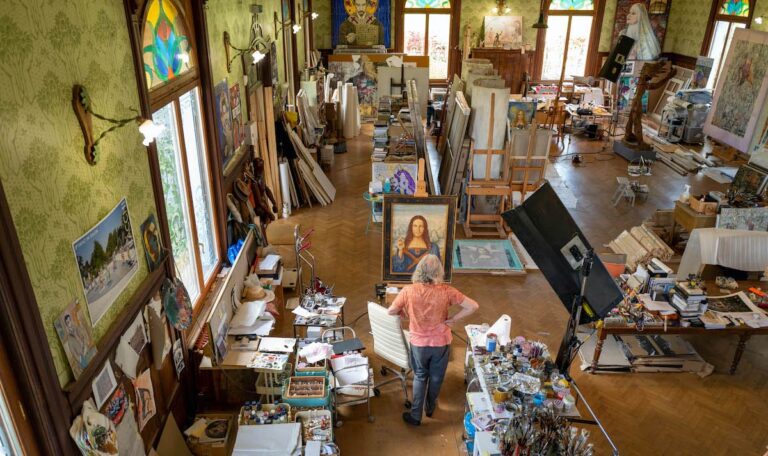Art forger Wolfgang Beltracchi is now selling copies of the world’s most valuable painting as NFTs
German Wolfgang Beltracchi, who is best known for his decades-long scheme of forging famous works of art, has jumped on the bandwagon and joined the world of nonfungible tokens (NFTs), where digital assets function as a type of collector’s item that simply cannot be duplicated. For his first pick, Beltracchi will be selling 4,608 original digital artworks of the world’s most expensive (as well as controversial) painting, the 500-year-old ‘Salvator Mundi’ by Leonardo da Vinci. Here’s how it will work.
According to Beltracchi’s website, the collection, called ‘The Greats’, is a “a digital journey through the history of art,” as each version of the ‘Salvator Mundi’ recreation incorporates the style of seven art eras, including painters such as Picasso, Van Gogh, and Da Vinci.

The original ‘Salvator Mundi’ painting, which is Latin for “saviour of the world,” sold for a whopping $450.3 million at a Christie’s auction in 2017 to Saudi Arabia’s Crown Prince, Mohammed bin Salman. “Experts, however, have struggled with whether Da Vinci truly painted the piece,” writes Business Insider. In fact, scientific evidence showed that the Italian polymath only made a contribution to the painting—but that’s a story for another time.
Beltracchi’s recreations of the piece will be on display when the sale starts in about a week, a spokesperson told The Block, adding that the artist chose to do the collection because he’s “the only person with the necessary skills to implement it. He has managed to fool the ‘art experts’ hundreds of times with his recreations of famous painters’ work.”
Beltracchi has remade famous paintings throughout his career of over three decades, but all in the form of forgery—meaning he refurbished works of famous artists and sold them in their names as original paintings when they were in fact fake. Between 1980 and 2011, the infamous forger conned the art world out of an estimated €35 million (just under £30 million).
He was then sentenced to six years in jail in 2011 by German authorities for forging 14 famous works of art and selling them for millions of dollars but was freed in early 2015, having served just over three years in prison. His wife was also sentenced as an accomplice to four years in jail. Beltracchi’s scheme began in the 1970s and shook the art world when it was first discovered.
Since his arrest, art museums, galleries, and auction houses have barred him from exhibiting and selling his art, which explains why the 70-year old ‘artist’ has now turned to the NFT space. “The NFT market offers artists a platform to market themselves independently and makes them independent from traditional art market mechanisms,” Beltracchi said in a statement shared with The Block.
The Greats will be making a “hidden sale,” said the spokesperson. That means buyers won’t know what NFT they are minting. To ensure the highest level of arbitrariness, The Greats says it is using Chainlink’s Verifiable Random Function (VRF), a verifiable source of randomness designed for smart contracts. The purpose of using the Chainlink VRF is to ensure that NFTs don’t get “exploited” by parties such as a miner, continued the spokesperson.
This sale is the perfect example of what today’s digital art represents—whether you approve of it or not is a whole new ball game. What you see on the canvas is not the only important thing anymore. Everything around it, such as the sales mechanism, the record of each owner and sale, the technical implementation, are also part of the art.






